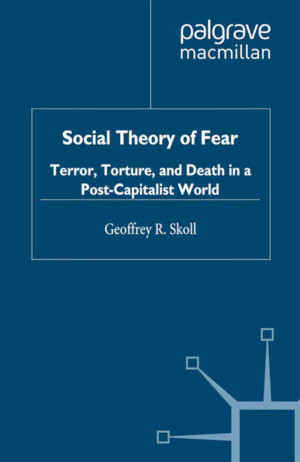The Merger Mystery
Why Spend Ever More on Mergers When So Many Fail?
by Geoff Meeks, J. Gay Meeks
DescriptionTable of ContentsDetailsHashtagsReport an issue
Drawing on findings from a wealth of statistical analyses and case evidence from many businesses, the book presents answers to this merger mystery. In a synthesis of ideas from several disciplines, solutions are detected in misaligned incentives, distorted financial engineering and information asymmetry. By revealing how weaknesses at multiple points can interact and cumulate to produce inefficient outcomes, the discussion serves as a corrective to the overwhelmingly positive tone of most commentary on M&A, whilst also advocating changes in participants' contracts, in taxation, and in regulation which could significantly reduce the number of mergers that fail.
Designed to be accessible to a wide readership, the book will be of interest to investors, to M&A practitioners and commentators, to researchers and students of economics, political economy, finance, management and accounting, and - importantly - to policy makers working in these areas. 






Book Description
Statistical studies over the last forty-five years show that, although there are success stories, very many mergers and acquisitions do not result in the increased operating profits that economics textbooks would lead one to expect. As consultancy McKinsey have put it, 'Anyone who has researched merger success rates knows that roughly 70% fail'. Yet - mysteriously - Merger and Acquisition activity has boomed across the globe, with a forty-fold increase in deals done each year now compared with four decades ago, in spite of the adverse general evidence. How can it be that talented, energetic, highly skilled, law-abiding, income-maximising participants in the M&A market will often promote mergers that lead to no operating gains, frequently with adverse effects on the wider economy too?Drawing on findings from a wealth of statistical analyses and case evidence from many businesses, the book presents answers to this merger mystery. In a synthesis of ideas from several disciplines, solutions are detected in misaligned incentives, distorted financial engineering and information asymmetry. By revealing how weaknesses at multiple points can interact and cumulate to produce inefficient outcomes, the discussion serves as a corrective to the overwhelmingly positive tone of most commentary on M&A, whilst also advocating changes in participants' contracts, in taxation, and in regulation which could significantly reduce the number of mergers that fail.
Designed to be accessible to a wide readership, the book will be of interest to investors, to M&A practitioners and commentators, to researchers and students of economics, political economy, finance, management and accounting, and - importantly - to policy makers working in these areas.
This open book is licensed under a Creative Commons License (CC BY-NC-ND). You can download The Merger Mystery ebook for free in PDF format (6.1 MB).
Table of Contents
PART I
INTRODUCING THE MYSTERY
Chapter 1
The Challenge
PART II
DETECTION: FOLLOWING THE CLUES
Section A
Misaligned Incentives for Executives, Advisers and Others
Chapter 2
Incentives for Executives
Chapter 3
Incentives for Advisers
Chapter 4
Incentives for Other Participants
Section B
Distorted Financial Engineering: Moral Hazard, Tax Privileges and Private Equity
Chapter 5
Moral Hazard
Chapter 6
Subsidies for Merging Firms
Chapter 7
Private Equity (PE)
Section C
Information Asymmetry
Chapter 8
Inefficient Mergers in an 'Efficient' Market
Chapter 9
The Accountant's M&A Cookbook
Chapter 10
Feedback Loops
PART III
RESOLUTION: REVIEW AND REFORM
Chapter 11
Exemplars of Failure
Chapter 12
Remedies?
Book Details
Title
The Merger Mystery
Subject
Business & Management
Publisher
Open Book Publishers
Published
2022
Pages
182
Edition
1
Language
English
ISBN13
9781800647794
ISBN10
1800647794
ISBN13 Digital
9781800647817
ISBN10 Digital
1800647816
PDF Size
6.1 MB
License

Related Books

In the current crisis of the capitalist world system, elites promote fear of crime and terrorism to keep and expand their privileges and control the masses. This book offers an analysis of the crisis and strategies for rebellion....

Story, in the largest sense of the term, is arguably the single most important aspect of narrative. But with the proliferation of antimimetic writing, traditional narrative theory has been inadequate for conceptualizing and theorizing a vast body of innovative narratives. In A Poetics of Plot for the Twenty-First Century: Theorizing Unruly Narrativ...

Since the revival of maggot therapy in Western wound care approximately thirty years ago, there has been no comprehensive synthesis of what is known about its clinical practice, supply chain management, and social dimensions. This edited volume fills the information vacuum and, importantly, makes the current state of knowledge freely accessible. It...

The first of its kind, this Open Report is a first step in assessing the state of the humanities worldwide. Based on an extensive literature review and enlightening interviews the book discusses the value of the humanities, the nature of humanities research and the relation between humanities and politics, amongst other issues....

Higher education in Europe and beyond faces a series of major challenges. The economic crisis has accelerated expectations of an increased role in addressing economic and societal challenges while, at the same time, putting pressure on available finances. Broader trends such as shifting student demographics and expectations, globalisation and mobil...

This volume explores interdependencies between knowledge, action, and space from different interdisciplinary perspectives. Some of the contributors discuss knowledge as a social construct based on collective action, while others look at knowledge as an individual capacity for action. The chapters contain theoretical frameworks as well as experiment...

